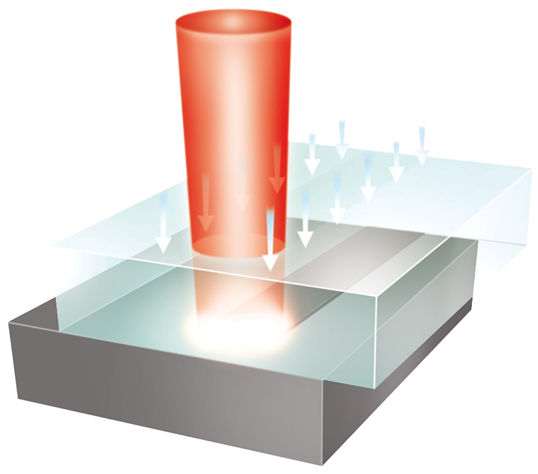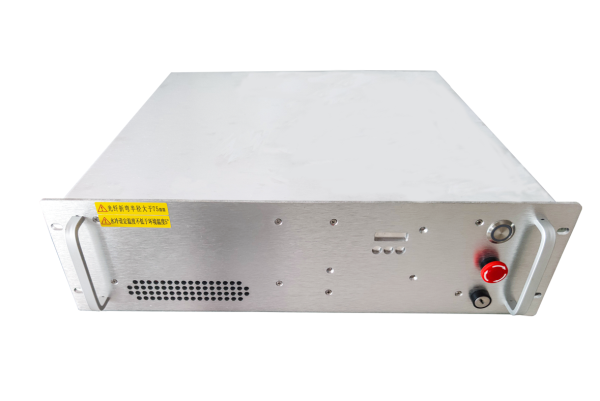Laser Plastic Welding Technology Enables Precision Plastic Welding
Connecting two injection-molded plastic components can be achieved through chemical, thermal, or mechanical techniques, depending on the product's end-use requirements and aesthetic considerations. However, joining plastic parts under harsh or sensitive conditions poses significant challenges. For instance, small electronic housings demand precise, reliable, and stable bonding without subjecting surrounding materials to any chemical, thermal, or mechanical stress.
Laser Plastic Welding Technology
Unlike other common joining techniques, laser plastic welding is a high-cleanliness process that generates no particulate matter. Laser plastic welding systems are compatible with cleanroom environments and offer diverse possibilities for inline process monitoring.
Principle of Laser Plastic Welding:
The laser beam penetrates the upper transparent material and reaches the light-absorbing surface of the lower material, converting laser energy into thermal energy to melt the surface. Simultaneously, heat is conducted from the bottom layer to the contact surface of the upper transparent workpiece pressed against it, causing it to melt and enabling laser thermal fusion welding. This process has been extensively validated through various quality control methods during welding.
The laser welding principle clearly demonstrates that, compared to other welding technologies, laser welding introduces significantly less energy into the components, as only a narrow area around the weld seam is heated. Depending on the material being welded and the desired weld strength, the seam width can range from a fraction of a millimeter to 1 millimeter. The laser spot diameter can be adjusted within this range to suit specific application requirements.

The laser beam generates heat at the weld seam. Through thermal conduction, the upper joining area also melts.
Laser welding technology offers numerous unique advantages. For example, electronic components requiring "encapsulation" can be designed with minimal edge widths, and the welding process does not affect these components. Additionally, due to the inherent characteristics of laser welding systems, this joining technology provides new design freedoms in product engineering, physical layout, and material selection.
Laser plastic welding enhances the safety standards of electronic or microfluidic products. The absence of particulate generation, high cleanliness, and geometric flexibility are critical prerequisites for manufacturing. This technology ensures high-quality production outcomes, making it suitable for both forming intricate microfluidic channels and seamlessly welding plastic housings for automotive sensors.
The required laser power depends on the specific application and material properties, ranging from a few watts to higher power levels—for instance, heat-resistant materials may demand increased power. Similarly, the choice between diode lasers or fiber lasers is determined by the application's specific requirements.

Product Image of Songsheng Optoelectronics 3U Direct Diode Water-Cooled Laser
The Songsheng Optoelectronics 3U Direct Diode Water-Cooled Laser offers higher photoelectric conversion efficiency and lower power consumption compared to traditional lasers. Its compact design ensures ease of use, while the flexible laser output enables seamless integration with system equipment.
Technical Features of the 3U Direct Diode Water-Cooled Laser:
Constant-Temperature Laser Processing: Real-time temperature monitoring at the processing point with closed-loop feedback ensures stable welding performance and strong adaptability.
PID Algorithm: Delivers rapid response to prevent burn-through at weld points.
Self-Stabilizing Control (Optional): Eliminates control instability caused by manual PID parameter adjustments.
Internal Water Cooling: Solves the bulkiness issues of external chillers and the insufficient heat dissipation of pure air cooling.
Laser Control: High-speed voltage tracking for laser power control, TTL output signal compatibility with all laser processing software.
Laser Power Feedback: Real-time online power monitoring ensures ultra-stable laser output performance.
Contact: Mr.Xiao
Phone: +86-13385280662
E-mail: market001@whlaser.cn
Add: Room 02, Floor 5, Building 9, Gezhouba Sun City, No. 40, Gaoxin 4th Road, Donghu New Technology Development Zone, Wuhan